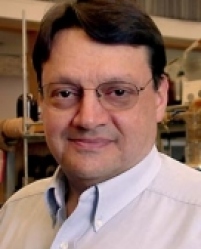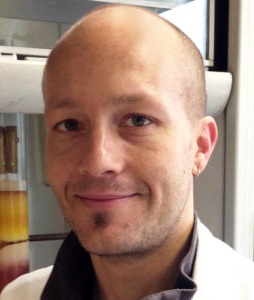Speakers
Confirmed speakers
Marco Ciufolini,
NanoVation Therapeutics & University of British Columbia (CA)

Problems and Solutions in Contemporary Synthetic Organic Chemistry
This presentation highlights synthetic efforts toward various natural and non-natural substances of current biomedical interest. In all cases, the studies in question required the development of new chemical methodology. The seminar will focus on the latter aspects of our studies. Examples will be drawn from our work on mitomycinoids (methodology for the assembly of medium-ring nitrogen heterocycles), Erythrina alkaloids, himandrin, and tetrodotoxin (oxidative amidation of phenols), thiopeptide antibiotics such as micrococcins P1 and P2 (solutions to the “thiazole problem”), and cationic ionizable lipids for the delivery of nucleic acid therapeutics. The presentation should be readily accessible to a broad audience of faculty, graduate students, and undergraduates.
Frank Glorius,
University of Munster (DE)

On Data, Discovery & Sensitivity in (Photo)catalysis
Catalysis is a key technology, since it allows for increased levels of selectivity and efficacy
of chemical transformations. While significant progress can be made by rational design or
engineered step-by-step improvements, many pressing challenges in the field require the
discovery of new and formerly unexpected results. Arguably, the question “How to discover?” is
at the heart of the scientific process. In this talk, (smart) screening strategies for
accelerated discovery and improved reproducibility will be presented, machine learning for
chemistry will be discussed, together with new photocatalytic transformations. In addition, two
other exciting areas will be addressed briefly:
N-Heterocyclic Carbenes (NHCs) are powerful ligands in catalysis due to their strong
electron-donating properties and their ability to form very stable bonds to transition metals.
In addition, they can stabilize and modify nanoparticles or flat metals surfaces, outperforming
established phosphine or thiol ligands regarding structural flexibility, electron-donating
properties and stability. Current research is highly interdisciplinary and focusses on the basic
understanding of the binding mode, mobility and the elucidation of the impact on the surface
properties. Exciting applications in materials science, heterogeneous catalysts and beyond are
within reach.
Biological membranes and their constituents are some of the most important and fundamental
building blocks of life. However, their exact role in many essential cellular processes as well
as in the development of diseases such as cancer or Alzheimer's is still not very well
understood. Thus, we design, synthesize and evaluate imidazolium-based lipid analogs that can
integrate into biological membranes and can be used as probes for live cell imaging or to
manipulate membranes.
Nicolas Leclerc,
CNRS STRASBOURG (FR)

Doped Conjugated Polymers for Thermoelectric Applications
Organic conjugated polymers are today the focus of intense research for their application in
organic electronics, and in particular the realization of lightweight, flexible and low-cost
devices.
In the last five years, the chemical and electrochemical doping of these semiconducting
materials has become increasingly important particularly, but not only, for applications in the
fields of thermoelectrics and electrochemical transistors. Doping of these materials makes them
conducting with electrical conductivities close to those of metals.
However, the insertion of dopants calls into question the control of the structural order of the
self-assembly of polymers in the solid state, with in particular poor control of the location of
the dopants.
After an introduction to the world of conjugated polymers and their doping methods, we will
discuss chemical engineering and process strategies for controlling the organization of the
conjugated polymer/dopant system in order to achieve high device performance.
.
Peter Bauerle,
University of Ulm (DE)

Synthesis – Materials – Energy; from Defined Molecules to Organic Materials to Photovoltaics
In this lecture, I’ll discuss the development of organic semiconductors for application in organic electronics. On the basis of (oligo)thiophenes, we are synthesizing and characterizing novel conjugated architectures and shapes, such as linear, macrocyclic, dendritic, and fused. By proper functionalization, their physical, in particular optical and redox properties, can be tailored and tuned leading to valuable structure-property relationships, which are the basis for their application as semiconducting materials in organic electronic devices, preferentially in organic and perovskite solar cells.
Alessandro Mordini,
Consiglio Nazionale delle Ricerche CNR – ICCOM (IT)

The Organometallic Chemist's Toolbox to Access New Molecules for Sustainable Energy and Fuels Production
Organic conjugated aromatic and heteroaromatic compounds have found broad application as active components in optoelectronic and photovoltaic devices, either as light-harvesting or charge carrier-transporting materials, and for the photocatalytic production of hydrogen. Due to their importance, many efforts have been made to establish easy, efficient and sustainable procedures to access donor-acceptor conjugated organic compounds endowed with a large structural diversity and thus able to be employed in various solar energy conversion technologies, such as dye-sensitized and perovskite solar cells, photocatalytic systems for hydrogen production and luminescent solar concentrators. In this talk, some selected examples will be presented, illustrating the rational design and the synthesis of the compounds and discussing the relationship between their spectroscopic and electrochemical properties and the performances of the corresponding solar-powered devices.
Rene Koenigs,
RWTH Aachen (DE)

Spin States Matter - Fundamentals, Applications and Translation to Drug Discovery
Carbenes and nitrenes are versatile reactive intermediates that find widespread application in organic synthesis. Their high reactivity, however, often necessitates the use of metal complexes for stabilization of such species. Herein, we describe our recent approaches towards photochemical and photocatalytic carbene and nitrene transfer reactions. Strategies in accessing either singlet or triplet carbenes will be discussed and their applications in synthesis methodology will be presented. We commence with a discussion of nitrene intermediates and how these can be accessed under visible light irradiation without the need of conventional metal catalysts. We describe strategies, how the access of nitrene intermediates can be manipulated by single electron transfer reactions or direct photoexcitation. We conclude with a discussion of a collaborative approach towards drug discovery, where fundamental discoveries can be translated into new drugs and medicines.